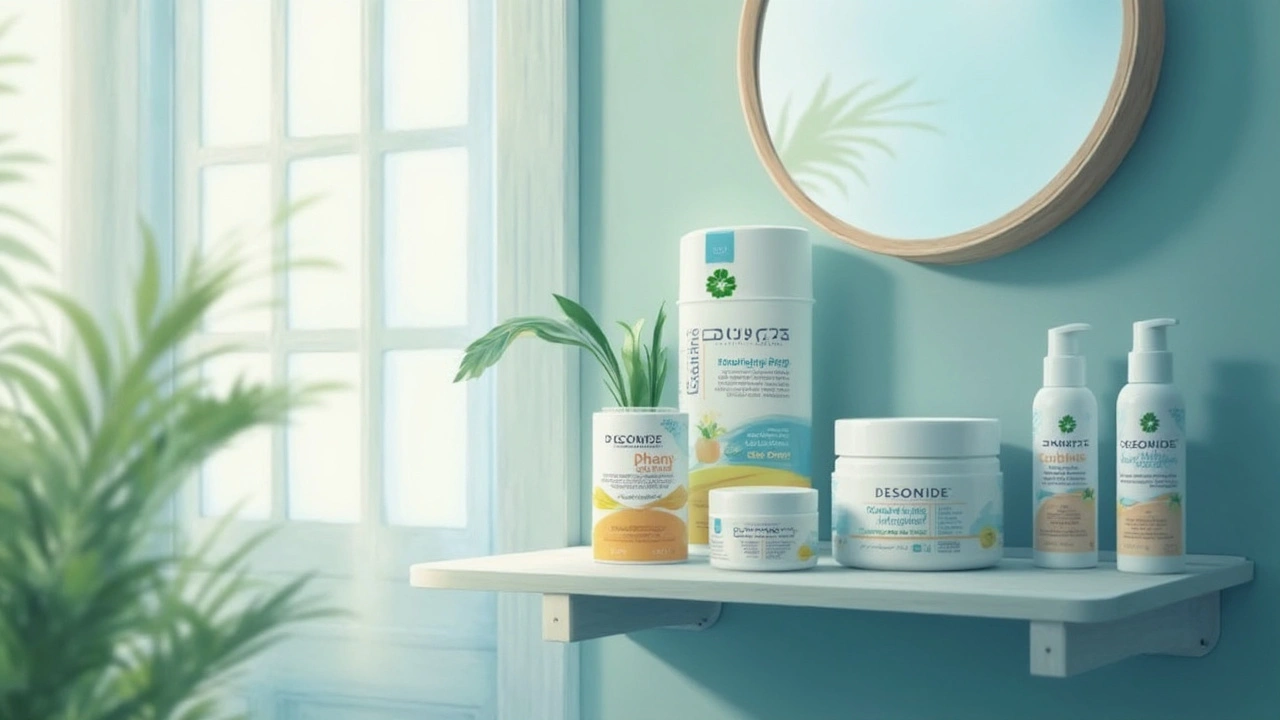Desonide Cream: Real-World Tips, Side Effects, and Safe Use
Heard about desonide cream but not sure if it’s right for your skin? This steroid cream is a common fix for redness, itching, eczema, and other annoying rashes. But knowing exactly how, where, and when to use it can save you from a lot of frustration—and unwanted side effects.
Desonide is a low-strength corticosteroid. That’s good news for sensitive skin or kids, but it still helps knock down inflammation, calm itchy, swollen patches, and speed up skin healing. People reach for it when eczema flares up behind their knees, rashes break out on their face, or when a doctor says “try this on your irritated skin.”
Confused about how much to use? You’re not alone. Slathering on too much won’t clear things up faster; it just ups the risk for side effects like thinner skin or even stretch marks. A rule of thumb: a pea-sized squirt covers an area the size of your hand. If you’re dealing with a toddler’s eczema, less is usually better—unless your dermatologist says otherwise.
Wondering if it stings or burns? That’s pretty rare with desonide, especially compared to stronger steroids. Some folks notice mild discomfort the first day or two, but it calms down fast. If burning, stinging, or peeling seems to get worse, stop and check with your doctor. Always wash your hands after putting it on, unless your hands are the part you’re treating.
Worried about using it on your face or eyelids? Desonide gets prescribed for the face more than most other steroids because it’s milder. Still, don’t use it longer than your doctor suggests. Extended use around the eyes, for example, can raise the risk for skin thinning or even increase eye pressure in rare cases.
How long until you see results? Most people notice less itching and redness in just a couple of days. Full healing might take a week or two. If things aren’t clearing up by then, don’t just keep using it—skin issues like fungal infections can look like eczema but need totally different treatment.
Worried about overlap with other products? Keep it simple. Skip other creams, ointments, or harsh cleansers on the treated spot. If you need to moisturize, apply your gentle, fragrance-free lotion first and wait at least 15 minutes before you reach for the steroid.
Still pondering questions? You’re not alone. People wonder if it’s safe for kids, if it’ll bleach skin, or if using it for too long is dangerous. Doctors say it’s safe for short bursts (like under two weeks), even for young kids or older adults. Longer use, especially on delicate spots, is where problems sneak in.
Desonide cream is one of the safest topical steroids, but treating each case with respect and caution makes all the difference. Always follow your dermatologist’s advice, watch out for changes, and don’t self-diagnose mystery rashes. Your skin will thank you for it.

Choosing the Best Desonide Product for Your Skin Type
Finding the right Desonide product for your skin type can be a game-changer for managing skin conditions like eczema and psoriasis. This article guides you through understanding your skin's needs, the various forms of Desonide, and how to choose the right one. Learn about safety tips and signs to watch for when using these treatments. Ensuring proper skin care tailored to your unique condition can lead to healthier skin and greater comfort.
view more